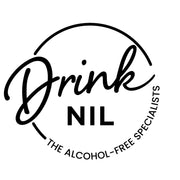Mindful Drinking - the facts.


---------------------
DE-ALCOHOLISED WINE TERMINOLOGY, explained.
(Courtesy of Spier Wine Farm - see Spier de-alcoholised wines here)
Wine is an alcoholic beverage made by the alcoholic fermentation of the juice of fresh grapes, with an alcohol content of 6,5 to 22,0% alcohol
by volume.
LOW ALCOHOL WINE
The alcohol content of this category of wines is more than 0.5 % but less than 4.5 %. It starts as a normal wine that undergoes fermentation
and then alcohol is removed through the processes of reverse osmosis, Spinning Cone technology and/or vacuum distillation. No addition of
exogenous water is allowed to make these wines. If the wine was provisionally certified before de-alcoholisation, variety and vintage may
appear on the final product. The Low Alcohol wine may not be certified for the origin and is not eligible for the certification seal.
DE-ALCOHOLISED WINE
The alcohol content of this category of wine is less than 0.5%. It starts as a normal wine that undergoes fermentation and then alcohol is
removed through the processes of reverse osmosis, Spinning Cone technology and/or vacuum distillation. No addition of exogenous water is
allowed to make these wines, although glycerol may be added to this product after de-alcoholisation.
If the wine was provisionally certified before de-alcoholisation, variety and vintage may appear on the final product. The de-alcoholised wine
may not be certified for the origin and is not eligible for the certification seal.
The mandatory class designation ("de-alcoholised") or a permissible alternative class designation ("non-alcoholic" or "alcohol removed") shall
always be indicated in conjunction with the expression "contains less than 0.5% alcohol by volume".
ALCOHOL-FREE WINE
To be academically correct alcohol-free does not exist because wine is defined as “an alcoholic beverage made by the alcoholic fermentation of
the juice of fresh grapes, with an alcohol content of 6,5 to 22,0% alcohol by volume”. The absence of alcohol in the wine means by law it can't
be called “wine”. Although a beverage can be made of the varietals grapes without fermenting the grapes and the product may be labelled as
a wine grape variety it is not wine, because it is grape juice dressed up in a wine bottle.
The grey area is that these wines usually start as a wine, which is 100% or partially de-alcoholised and therefore the perception is that it is a
wine.
The alcohol content of this category of wine is less than 0.05% and no analytical tolerance will be allowed.
It starts as a normal wine that undergoes fermentation and then alcohol is removed through the processes of reverse osmosis, Spinning Cone
technology and/or vacuum distillation. No addition of exogenous water is allowed to make these wines, although glycerol may be added to
this product after de-alcoholisation.
If the wine was provisionally certified before de-alcoholisation, variety and vintage may appear on the final product. The de-alcoholised wine
may not be certified for the origin and is not eligible for the certification seal.
NON-ALCOHOLIC WINE
A non-alcoholic product is not derived from a fermented product from which alcohol has been removed. Non-alcoholic products have never
contained any alcohol.
--------------------
Read a more in depth study around the benefits of Mindful Drinking by our friends at The Mindful Drinking Blog here
See more Drink Nil News and Articles, Mocktail Recipes &other tips here
